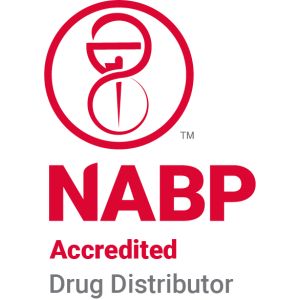Addressing the Consequences of High-Cost Labor
In any industry, a business’s greatest asset is its people. People advance innovation and drive productivity. And while of course talent and labor are essential to what you produce and how you do it, high costs can imperil your profitability and hinder your growth. That’s especially relevant in a market as competitive as the orthopedic medical device industry.
For OEMs, understanding true internal costs and geographic cost pressures together can help you analyze the effect on your operational expenses. When you do, you can make more informed decisions on resource utilization, efficiency, and the power of outsourcing to change your growth trajectory.
The economics of labor costs
Of course, labor costs can be variable, influenced by factors and pressures both within and outside your business. Some of them you can control while others you cannot. Location, supply and demand, the hiring market, task difficulty, and workplace efficiency all affect labor rates. Over time, supply and demand fluctuate, for instance, or the hiring market shifts from more to less competitive. These changes all affect labor rates, which in turn affect your costs and profitability.
Understanding your true internal costs
Keeping an eagle eye on your bottom line requires a clear understanding of your true internal costs. Everything you do as a business incurs direct and indirect costs. Accurately calculating your full burden labor rate can help you understand how and when labor costs are advantageous and when they cut into your profitability.
To do so, you’ll need to include the cost of all staff associated with production: the wages and costs of temporary and permanent staff plus the associated costs incurred by IT personnel, operations and quality staff, and the proportion of involvement by maintenance as well as management and other leadership. When you know your true internal cost, you are far better prepared to make a comparison between doing something in-house or outsourcing—and you’ll understand which option costs you less.
Since you will no longer fall into the trap of “it’s free if we do it in-house,” you will be able to determine the best, most efficient space and resource utilization for profitability and growth.
Understanding geographic cost pressures
Manufacturing and production are driven by human capital, so labor rates affect production costs. It’s a reality that certain geographic locations have higher labor rates than others—and therefore come with higher production costs. Locations near innovation hubs and urban centers can, in some cases, result in higher labor and production costs. A higher cost of living and more demand for skilled workers can be contributing factors. Conversely, facilities located further from urban centers—or, in some cases, in historically economically depressed or lower cost-of-living areas—may incur lower production costs because of differences in labor rates.
Understanding factors that drive up operational expenses
Can you turn loaner kits in a 24-hour timeframe? Can you ship next-day if a kit order comes in at 11 pm? If so, it’s crucial to understand how peak demand can drive up overtime—and consequently your operational expenses. Again, that’s where a clear understanding of your true internal labor rate is essential to determining whether or not it’s advantageous to handle all capabilities in-house.
The power of outsourcing
Whether a result of underestimating peak demand or geographic cost pressures, expensive labor can constrain your financial resources, leaving less to invest in research and development, innovation, and growth. When you truly understand the consequences of high-cost labor, though, you are prepared to analyze your options.
Once you see cost pressures for what they are, the most effective allocation of your resources often turns out to be outsourcing key capabilities. An expert partner can offer valuable expertise and best-in-class processes that ensure the ultimate quality for patient safety. Outsourcing also opens the door to scalability that can flex with demand pressure, helping you control fixed costs while at the same time boosting your in-house capabilities or freeing your staff to focus on your core competencies.
Understanding your cost pressures and their consequences can help you change your resource utilization—and growth trajectory—through outsourcing with an effective, expert partner.
At Millstone, we get it. We believe quality drives patient success. That’s why we’ve perfected all the capabilities medical device manufacturers need to get to market. Today we offer post-manufacturing and aftermarket services to more than 50 customers, including some of the top 10 orthopedic companies in the world. We are constantly evolving our processes and services to help OEMs achieve sustainable success. We offer clean room packaging, medical device specific warehousing, finished goods distribution, loaner kit management, advanced inspection and after-market services—all with an unparalleled focus on quality.
What could we help you do better? Learn more at https://millstonemedical.com.
Comments are closed.



